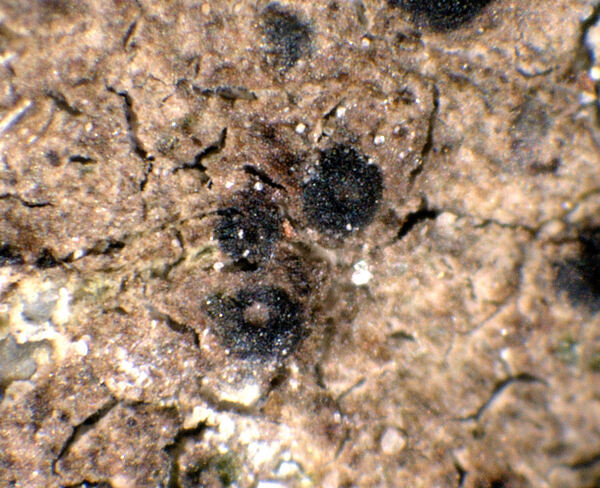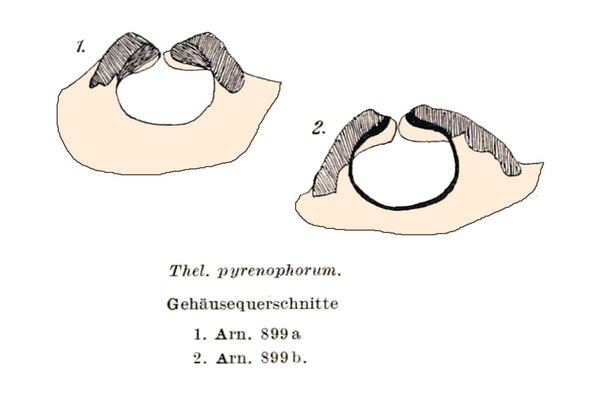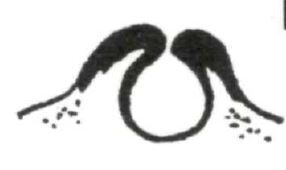Thelidium pyrenophorum (Ach.) Körb.
Syst. Lich. Germ.: 353, 1855 . Basionym: Verrucaria pyrenophora Ach. - Lichenogr. Univ.: 285, 1810.
Synonyms: Involucrothele pyrenophora (Ach.) Servít; Involucrothele subincincta Servít; Paraphysothele viridis (Deakin) Zschacke; Thelidium borreri Mudd; Thelidium incinctum (Vain.) Vain.; Thelidium nylanderi (Hepp) Lönnr.; Thelidium viride (Deakin) Zahlbr.
Distribution: N - VG, Frl, Ven, TAA (Nascimbene 2008b, Nascimbene & al. 2022), Lomb, Piem (Isocrono & al. 2004), VA (Piervittori & Isocrono 1999), Emil, Lig (Giordani & al. 2016). C - Marc (Nimis & Tretiach 1999), Sar. S - Cal (Puntillo 1996).
Description: Thallus crustose, thinly episubstratic, white to grey, rarely brownish or inapparent, continuous to somewhat cracked. Perithecia black, sometimes grey-pruinose, (0.35-)0.4-0.7(-1) mm across, strongly projecting from the rock, not covered by thallus. Involucrellum well-developed, covering the upper third of the perithecium; exciple dark in upper part, colourless or pale brown in lower part; hamathecium of periphyses and periphysoids, interascal filaments absent; hymenial gel I+ red (I+ blue at very low concentrations of I), K/I+ blue. Asci 8-spored, narrowly ellipsoid to clavate, I-, fissitunicate, the wall thickened above, with an ocular chamber, dehiscent by extrusion of a delicate rostrum. Ascospores 1-septate, hyaline, ellipsoid, (17-)21-32(-40) x (7.5-)10-14(-16.5) μm. Photobiont chlorococcoid. Spot tests: K-, C-, KC-, P-, UV-. Chemistry: without lichen substances.Note: a widespread lichen, with optimum on limestone and dolomite, but also found on calciferous sandstone; most common in the Alps, rarer, but perhaps more widespread, in the Apennines.
Growth form: Crustose
Substrata: rocks
Photobiont: green algae other than Trentepohlia
Reproductive strategy: mainly sexual
Commonnes-rarity: (info)
Alpine belt: rather rare
Subalpine belt: rather common
Oromediterranean belt: very rare
Montane belt: very rare
Submediterranean belt: extremely rare
Padanian area: absent
Humid submediterranean belt: extremely rare
Humid mediterranean belt: absent
Dry mediterranean belt: absent
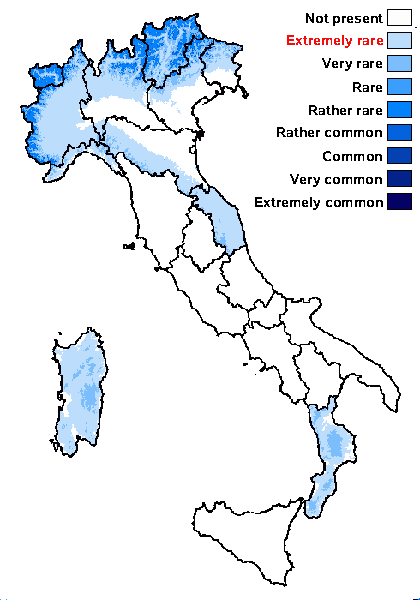
Predictive model
Herbarium samples
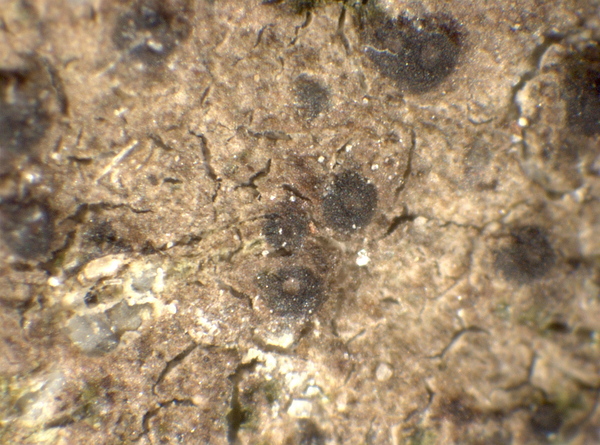

P.L.Nimis; Owner: Department of Life Sciences, University of Trieste
Herbarium: TSB (36801)
2008.02.23
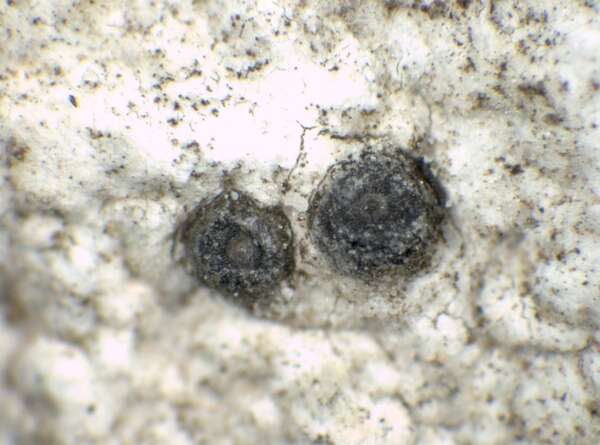

P.L. Nimis; Owner: Department of Life Sciences, University of Trieste
Herbarium: TSB (33073)
2001/12/11
Growth form: Crustose
Substrata: rocks
Photobiont: green algae other than Trentepohlia
Reproductive strategy: mainly sexual
Commonnes-rarity: (info)
Alpine belt: rather rare
Subalpine belt: rather common
Oromediterranean belt: very rare
Montane belt: very rare
Submediterranean belt: extremely rare
Padanian area: absent
Humid submediterranean belt: extremely rare
Humid mediterranean belt: absent
Dry mediterranean belt: absent

Predictive model
| Herbarium samples |


P.L.Nimis; Owner: Department of Life Sciences, University of Trieste
Herbarium: TSB (36801)
2008.02.23


 INDEX FUNGORUM
INDEX FUNGORUM
 GBIF
GBIF
 DOLICHENS
DOLICHENS
